

In this talk...
- What is a Data Pipeline?
- Look at technologies involved:
- App Engine Pipeline API, MapReduce Library
- App Engine Datastore
- Google BigQuery
- Google Cloud Storage
- Use Cases: Building Data Pipelines using App Engine
- Best Practices
- Q & A
Data Application Patterns

Data Application Patterns
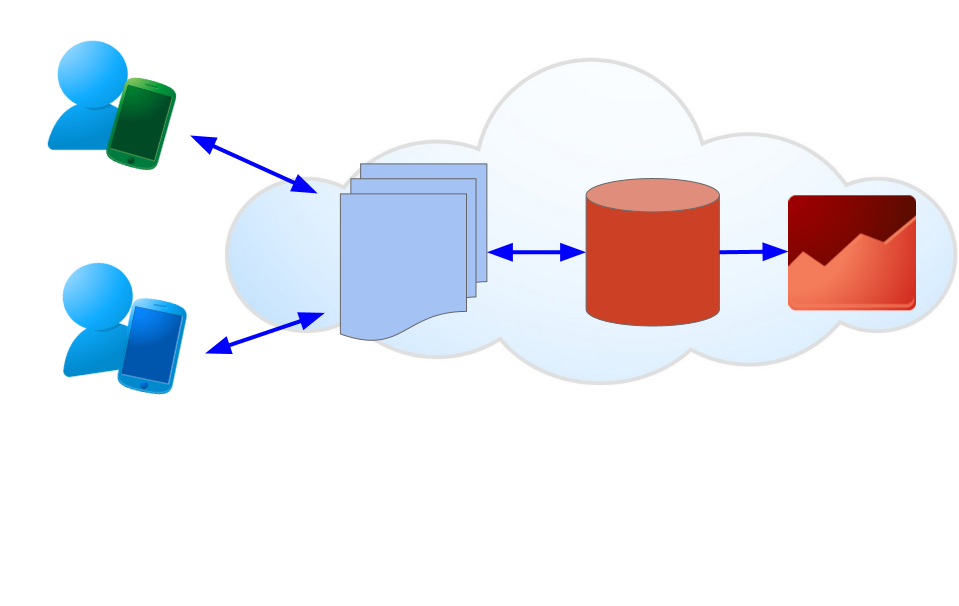
Data Application Patterns
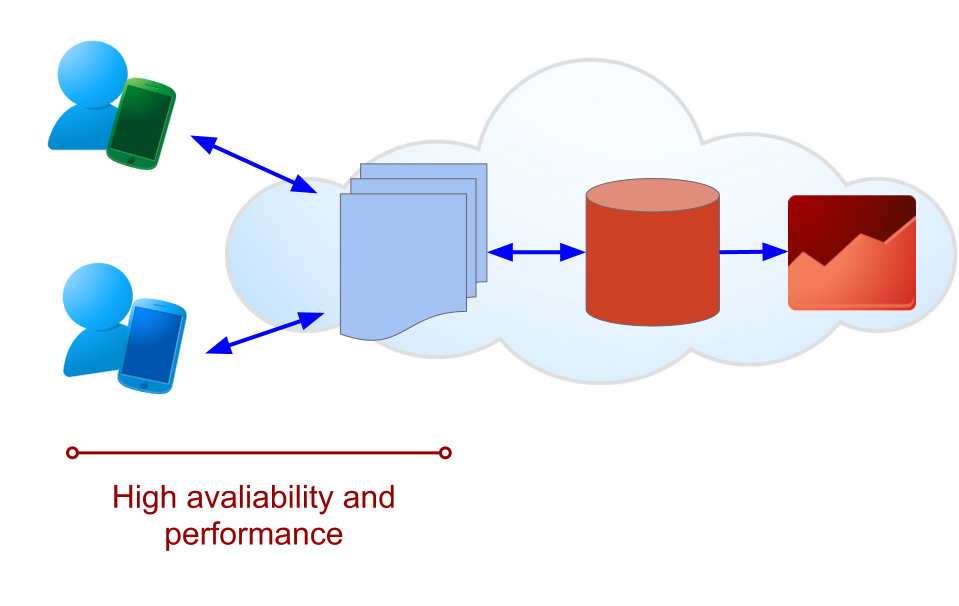
Data Application Patterns
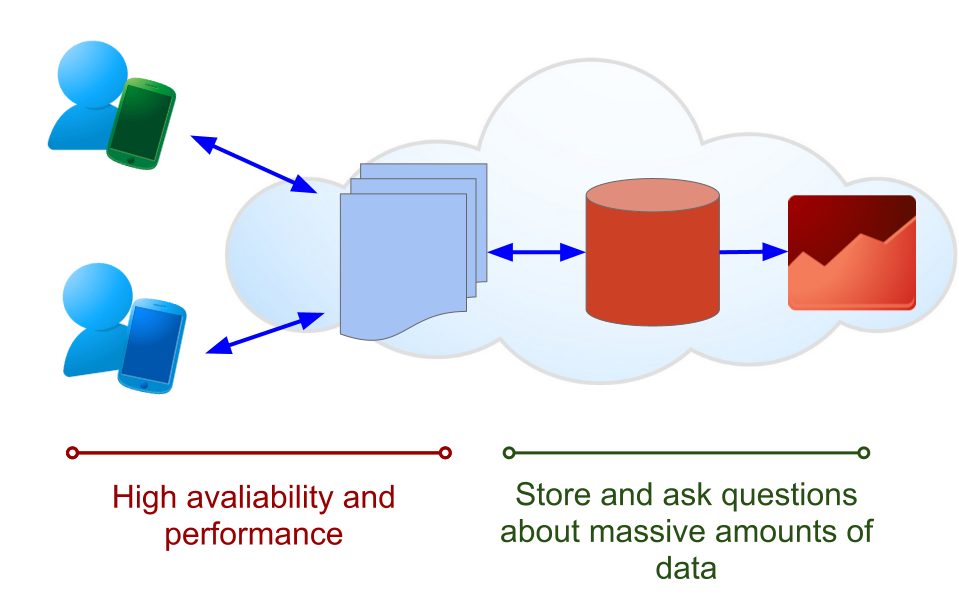
Data Application Patterns
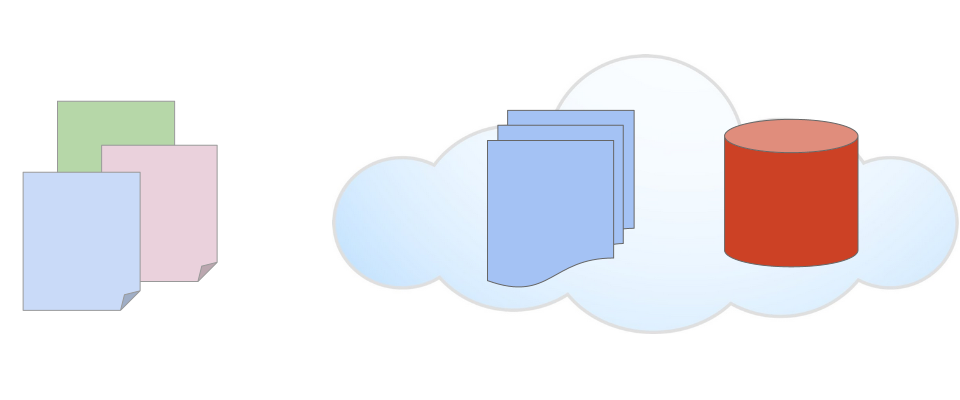
Data Application Patterns
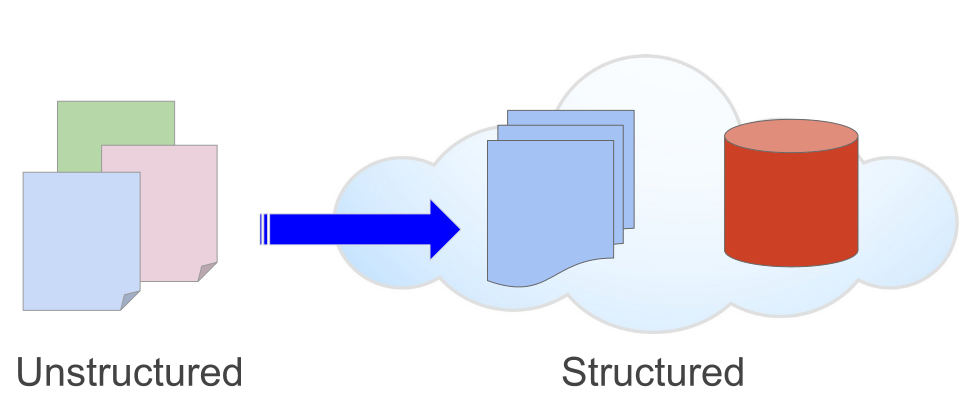
Your Data
Scale creates challenges
When Data Sizes are Small
A traditional, relational backend on a web application stack might work...
- MySQL for data collection, transformation, and analysis
- Collect Large Amounts of Data? - Sharding, Distributed systems, moving to NoSQL?
- Ask Questions About your Data? - Query performance?
Massive Datasets: Right Technology for the Task
| NoSQL database | High availability and performance |
|---|---|
| Analysis tools | Real-time aggregate queries |
| Ubiquitous Storage | Archiving, scale, data transformations |
Google's Cloud Data Services
App Engine Datastore
Collect and serve data at scale
- A
{'key':'value'}Store (with indexes) - Highly available and high performance
- Allows for CRUD operations on records
- Fluid Schema
SQL vs NoSQL: Battle of the Backends
Google BigQuery
- SQL-like queries on massive datasets
- via a RESTful API
- Append-only
- Fixed Schema (unlike the fluid schema of Datastore)
- Data ingestion via CSV data
- Demo: BigQuery Web UI
- Demo: QlikView US Natality Data Dashboard
Crunching Big Data with BigQuery
Google Cloud Storage
- Storage unstructured data in the cloud
- Individual objects can be huge - Terabyte+
- Stage raw CSV data before loading it into BigQuery
Workflow to help automate data transfer between these systems
| App Engine Datastore | Web Scale collection of user data streams: a non-relational Datastore |
|---|---|
| Google Cloud Storage | Permanent archive of raw CSV data: cloud-based storage |
| Google BigQuery | Analysis of very large datasets |
App Engine Pipeline API
- Provides a framework for automating workflows
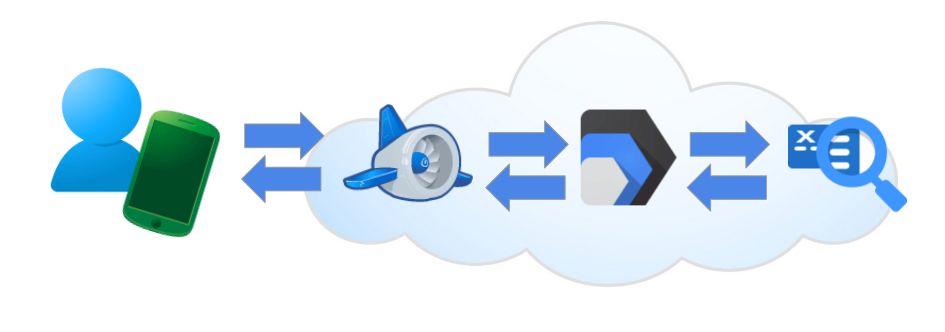
Google Pipeline API
Define a Pipeline function
class AddOne(pipeline.Pipeline):
def run(self, number):
return number + 1
add_pipeline = AddOne(1)
add_pipeline.start() # Start the pipeline
pipeline_id = add_pipeline.pipeline_id # Refer to the pipeline
Google Pipeline API
Define a Pipeline function
stage = AddOne.from_id(my_pipeline_id)
if stage.has_finalized:
# do something with result
print stage.outputs.default.value
Google Pipeline API
Connect two pipelines together
class AddTwo(pipeline.Pipeline):
def run(self, number):
result = yield AddOne(number)
yield AddOne(result)
Pipeline Characteristics
- Pipeline patterns let you write procedural code
- Sources (inputs) and Sinks (outputs)
- Pipeline API: Provides a useful dashboard for viewing progress
MapReduce, of course!
- MapReduce is a powerful abstraction
- Allows for distributed processing over large datasets
Map Reduce Word Count

Map Reduce Word Count: Map Phase
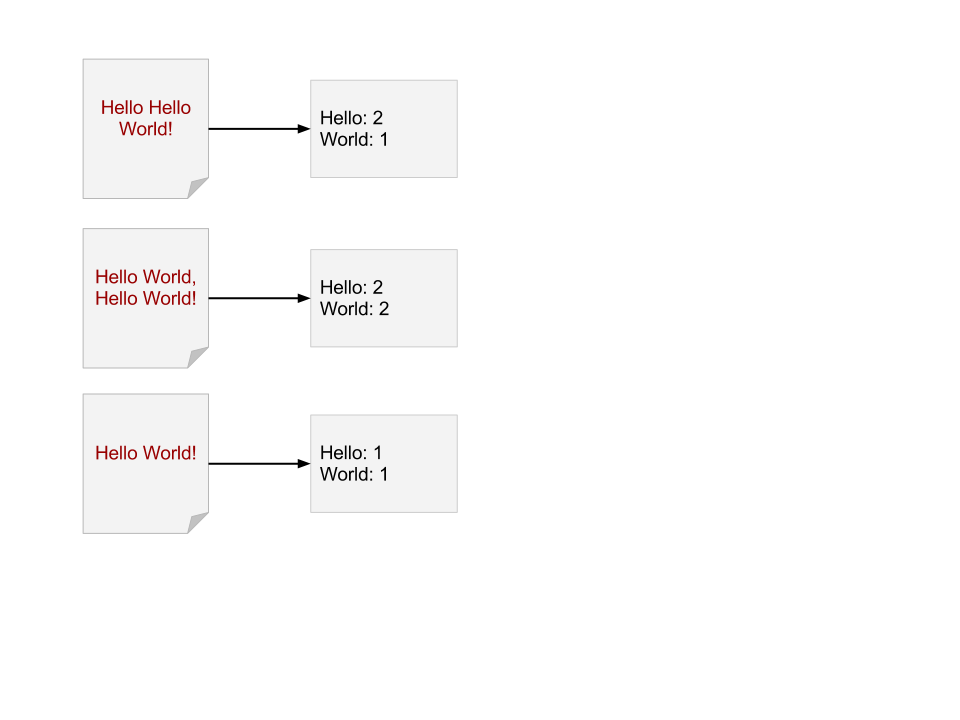
Map Reduce Word Count: Shuffle Phase
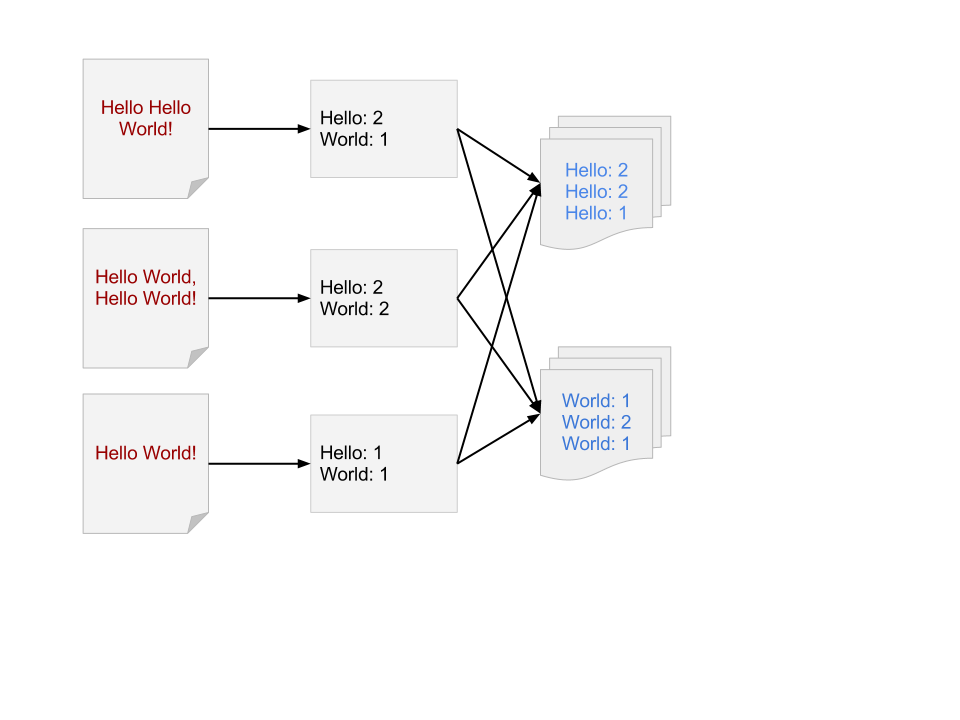
Map Reduce Word Count: Reduce Phase
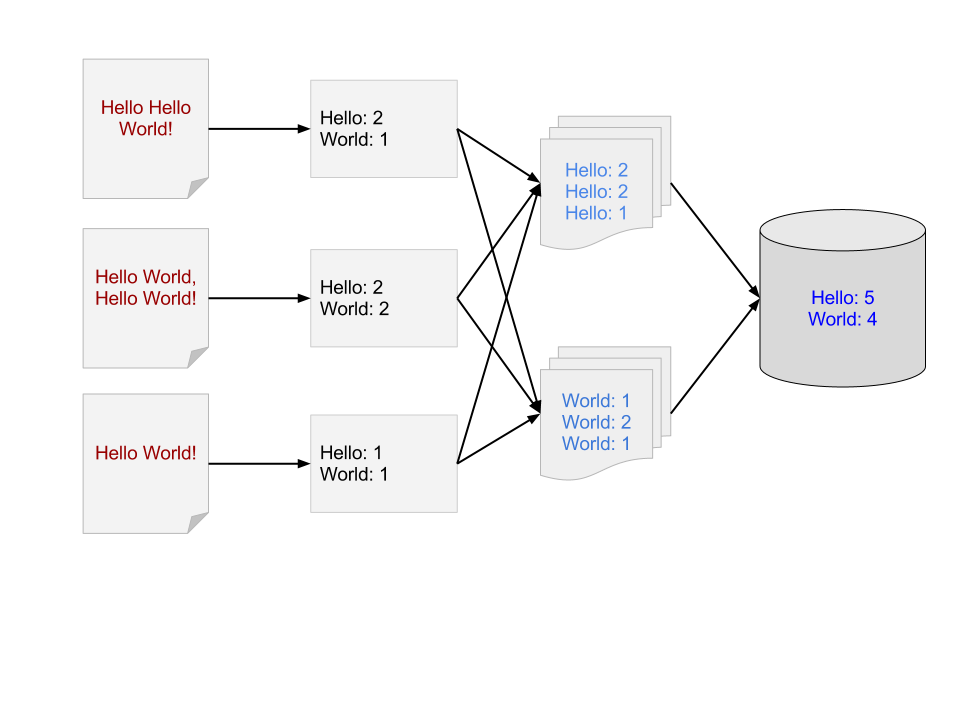
App Engine MapReduce
Focus on data transformation, not infrastructure details
- Open Source Library
- Built with App Engine Task Queues, BlobStore and the Pipeline API
- Provides input/output tools for many "sources and sinks"
App Engine MapReduce
class MyPipeline(base_handler.PipelineBase):
def run(self, parameter):
output = yield mapreduce_pipeline.MapreducePipeline(
"name_of_pipeline_step",
"main.map_function", # A Mapper Function
"main.reduce_function", # A Reduce Function
"mapreduce.input_readers.DatastoreInputReader", # Data Source
"mapreduce.output_writers.FileOutputWriter", # Data Sink
mapper_params={}, # Custom Parameters for Mapper
reducer_params={}, # Custom Parameters for Reducer
shards=16) # Workers per Job
yield AnotherPipeline(output)
Why use Google App Engine?
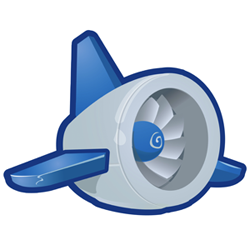
- Scaling things yourself can be difficult/time consuming
- No need for new hardware infrastructure
- Avoid costs becoming unpredictable
- App Engine provides an excellent framework for app development
Data Pipelines in Practice
Examples and Code
Example 1: Simple Datastore Mapper
Move Datastore Data into Google BigQuery
- Convert Datastore Data into CSV
- Simple Transformation (UTC Datestamp to Unix Epoch)
Example 1: Simple Datastore Mapper

Example 1: Simple Datastore Mapper

Example 1: Simple Datastore Mapper

Example 1: Simple Datastore Mapper

Example 1: Simple Datastore Mapper
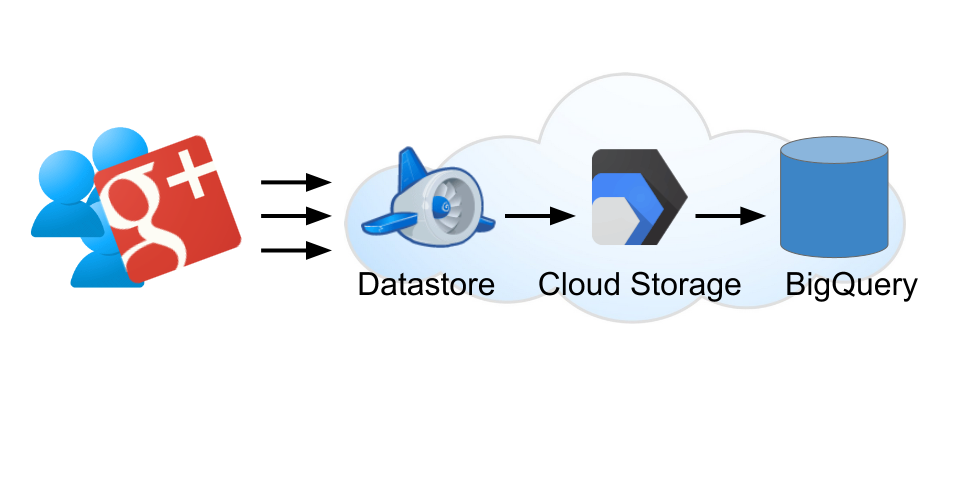
Example 1: Simple Datastore Mapper

Example 1: Simple Datastore Mapper
Iterate through Datastore, results into Cloud Storage
class IteratorPipeline(base_handler.PipelineBase):
def run(self, entity_type):
output = yield mapreduce_pipeline.MapperPipeline(
"Datastore_Iterator_" + entity_type,
"main.datastore_map",
"mapreduce.input_readers.DatastoreInputReader",
output_writer_spec="mapreduce.output_writers.FileOutputWriter",
params={
"input_reader":{ "entity_kind": entity_type, },
"output_writer":{
"filesystem": "gs", "gs_bucket_name": GS_BUCKET, "output_sharding":"none",
}
},
shards=SHARDS)
yield CloudStorageToBigQuery(output)
Let's incorporate a simple transformation
Change Google+ timestamp to Unix Epoch Time

Let's incorporate a simple transformation
Change Google+ timestamp to Unix Epoch Time
BigQuery requires timestamps to be expressed in Unix epoch (integer)
import time, calendar def convert_timestamp_to_epoch(timestamp): time_struct = time.strptime(timestamp, '%Y-%m-%dT%H:%M:%S.%fZ') return calendar.timegm(time_struct)
Example 1: Simple Datastore Mapper
Pipe resulting Cloud Storage Objects into BigQuery
class CloudStorageToBigQuery(base_handler.PipelineBase):
def run(self, files):
table_name = 'gplus_data_%s' % datetime.utcnow().strftime(
'%m%d%Y_%H%M%S')
jobs = bigquery_service.jobs()
result = jobs.insert(projectId=PROJECT_ID,
body=build_job_data(table_name,files)).execute()
Codelab: Querying App Engine logs with BigQuery
Example 2: JOIN Two Datastore Entities by Key
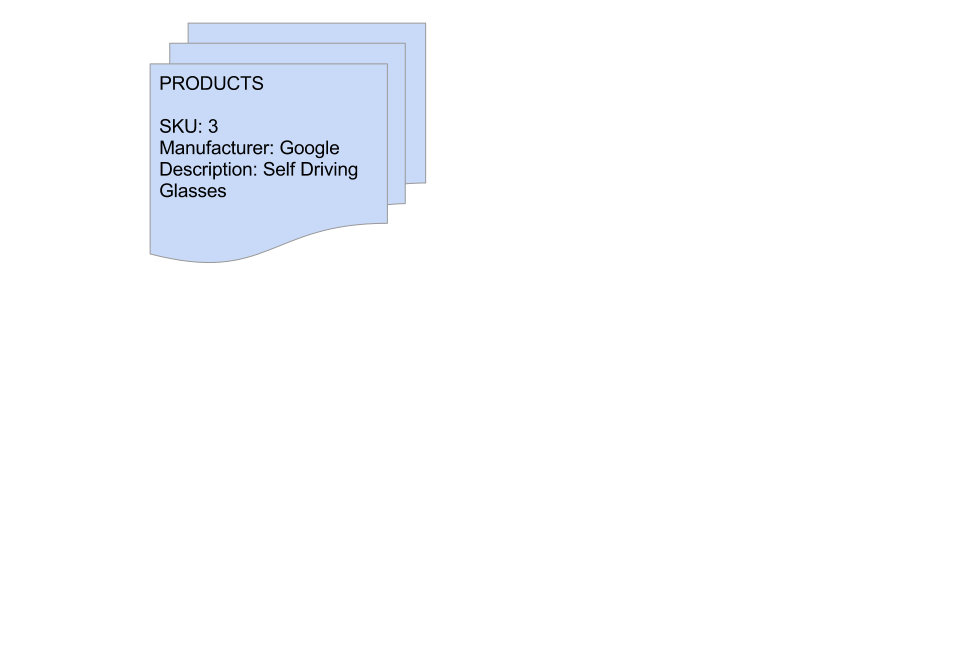
Example 2: JOIN Two Datastore Entities by Key
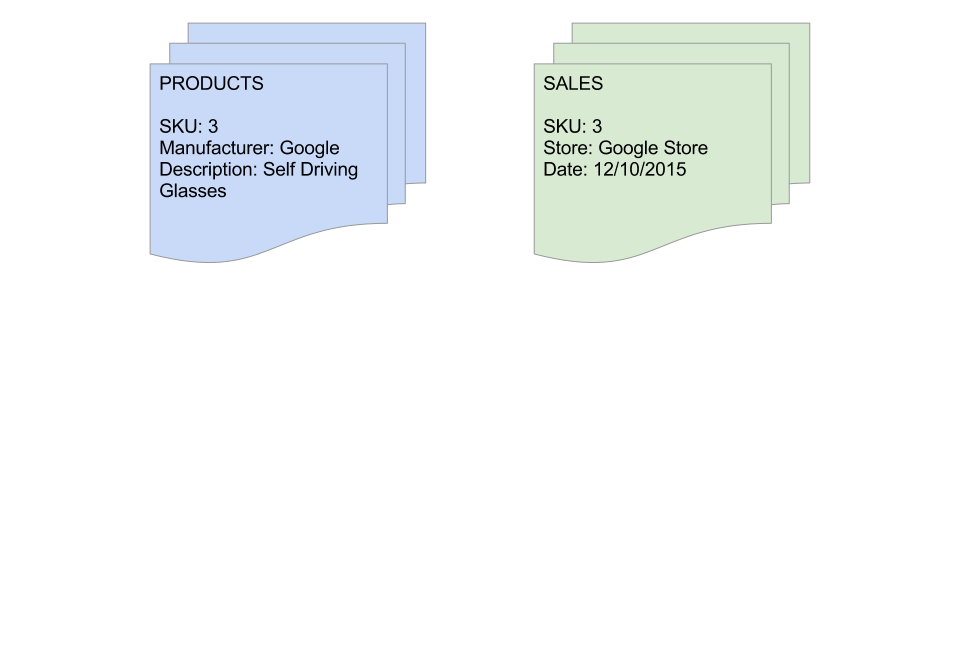
Example 2: JOIN Two Datastore Entities by Key
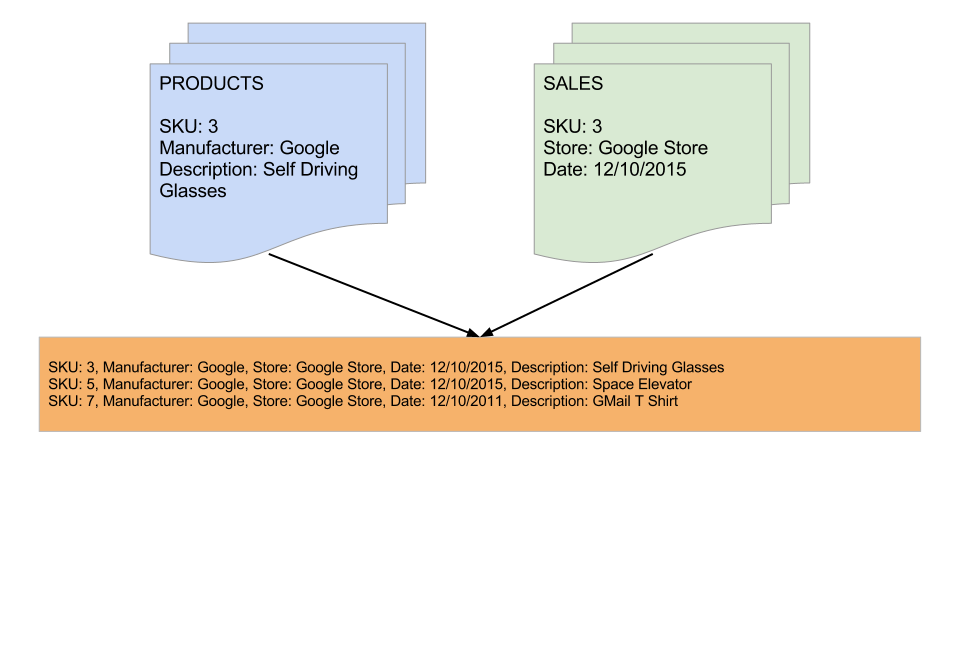
Example 2: JOIN Two Datastore Entities by Key

Step 1: Map Phase

Step 1: Map Phase

Step 1: Map Phase
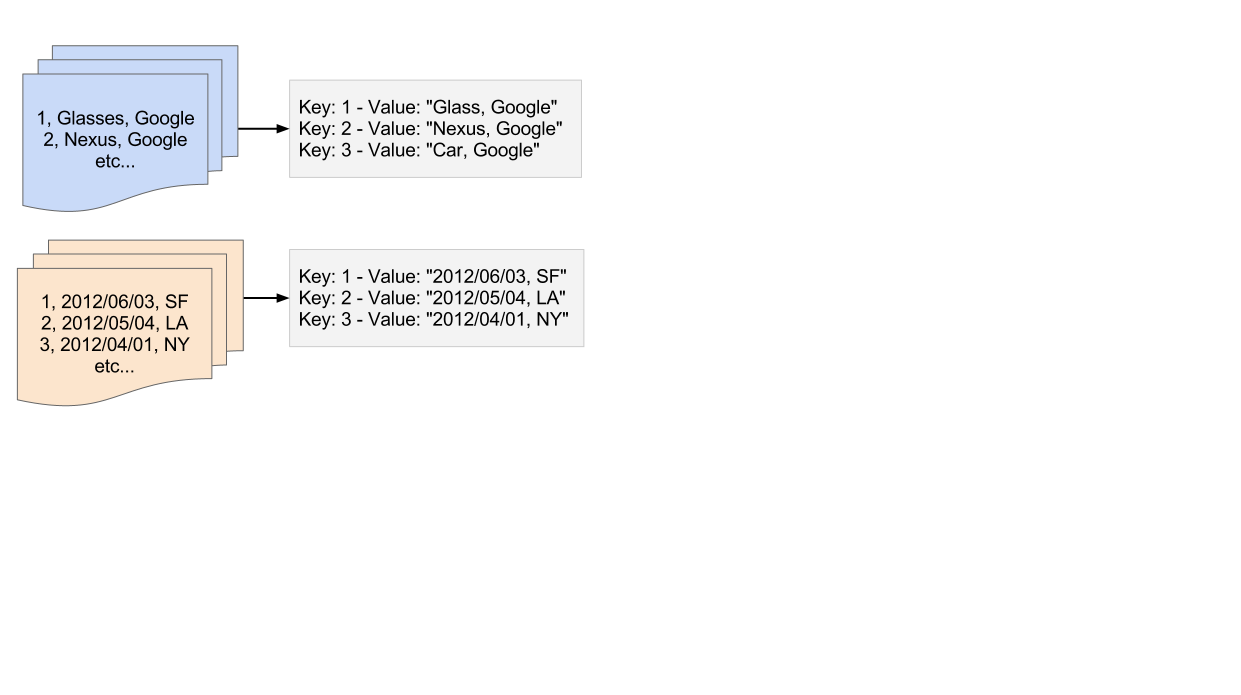
Step 2: Shuffle by Key
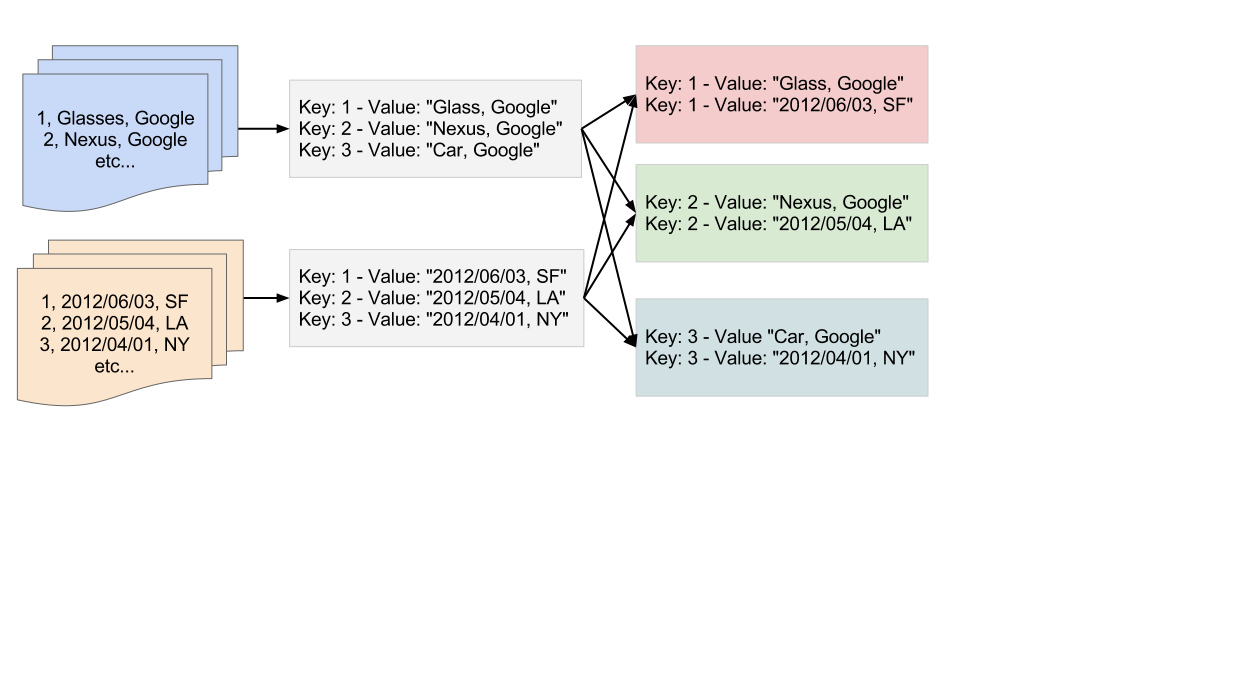
Step 3: Reduce - Join all Products/Sales per Key
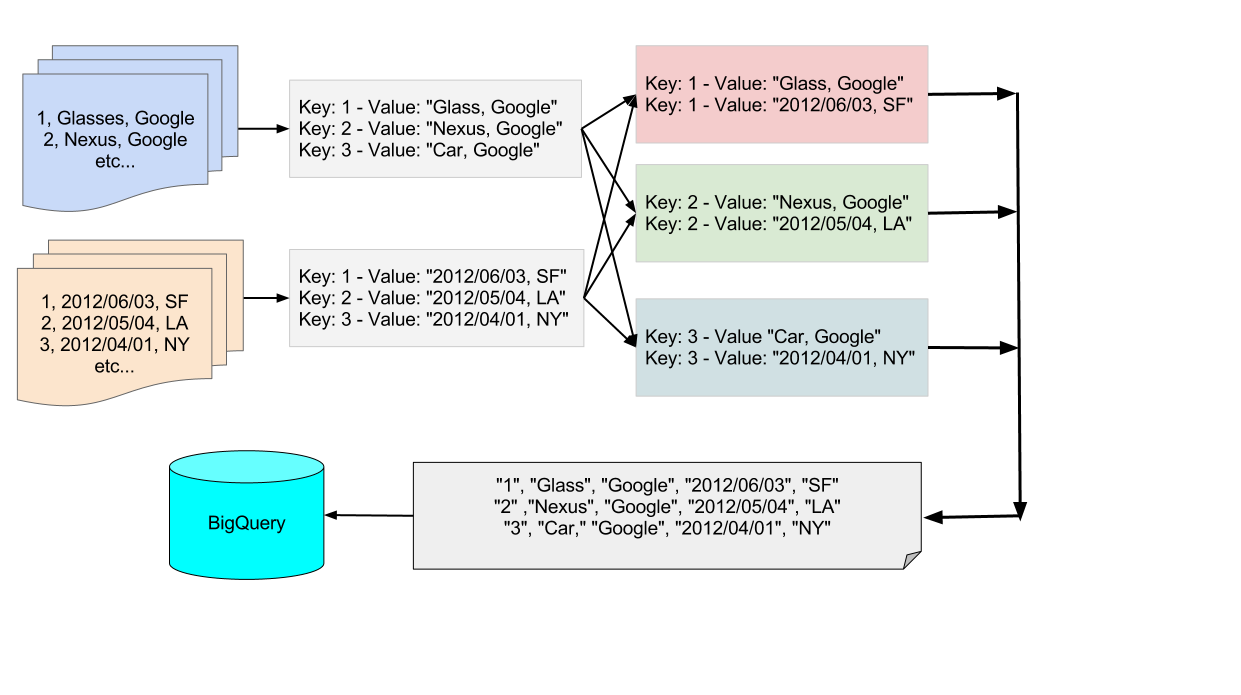
Example 2: JOIN Two Datastore Entities by Key
class JoinOnSKU(base_handler.PipelineBase):
def run(self):
product_data = yield DatastoreMapperPipeline(
mapper_spec = 'main.Datastore_map',
entity_kind_spec = 'main.ProductDescription',
shards=16)
sales_data = yield DatastoreMapperPipeline(
mapper_spec= 'main.Datastore_map',
entity_kind_spec = 'main.ProductSales',
shards=16)
Example 2: JOIN Two Datastore Entities by Key
all_data = yield pipeline_common.Extend(product_data, sales_data)
shuffled_data = yield mapreduce_pipeline.ShufflePipeline(
'Shuffle by Product ID',
all_data,
shards=16)
Example 2: JOIN Two Datastore Entities by Key
join_by_user_id = yield mapreduce_pipeline.ReducePipeline(
'Join by SKU ID',
'main.storage_reduce',
output_writer_spec = 'mapreduce.output_writers.FileOutputWriter',
params = {
'output_writer':{
'filesystem': 'gs',
'gs_bucket_name': 'datastore_export',
'output_sharding':'none'
}
},
filenames = shuffled_data)
def storage_reduce(key, values):
# Do something with the resulting values
# A JOIN, a count, etc etc
yield ('%s\n' % result)
Performance & Best Practices
Additional features you can adjust
- Number of Shards per Job
- App Engine Instance Size
- Task Queue Settings
BigShuffle: Experimental High Performance Shuffle
- Currently accepting a limited number of BigShuffle testers
Wrap Up:
- Build so that your computation is close to where your data lives
- Worry about your app, not your infrastructure
- Code: Keeps it simple, easy to maintain and test
Questions?
<Thank You!>
Michael Manoochehri.